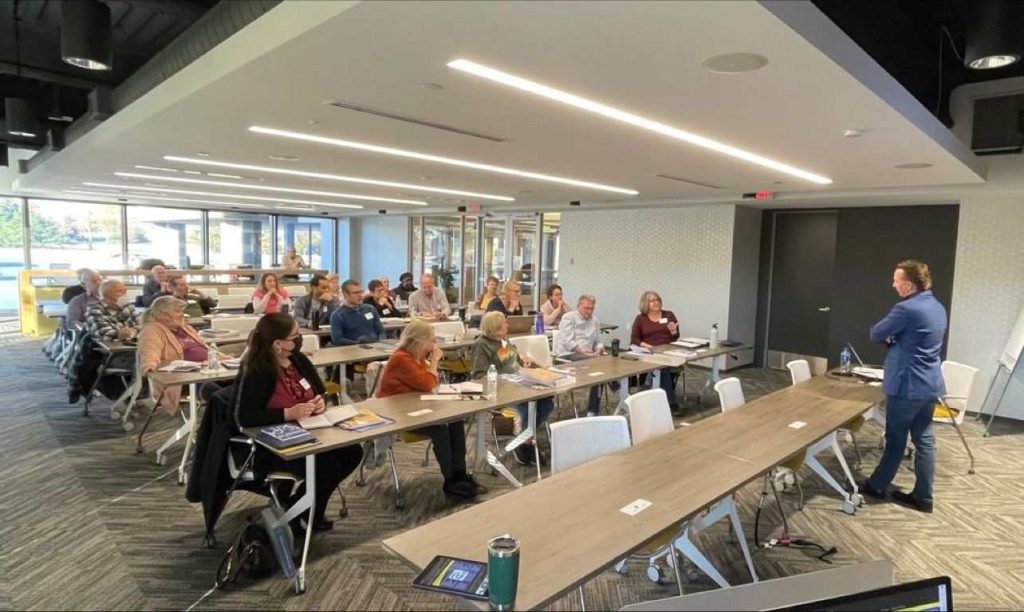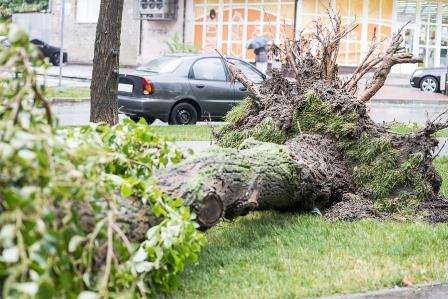Board Training – Section II – October 26

The second section in Sharper’s Board Training program is scheduled for Wednesday, October 26th, 6 p.m. at the Wells Fargo Plaza located at 7900 Xerxes Avenue in Bloomington. This free 90-minute session will focus on financials and insurance. Led by Sharper’s director of business development and education, Josh Reams, – and president of Insurance Warehouse, Eric Skarnes – topics will include: Insurance Basics: Defining Policy Types & Coverages Understanding Deductibles Marketplace Update Financial Fundamentals: Setting & Managing Operating Budgets Reserve Fund Requirements Understanding Reserve Studies Basic Financial Reports Audit/Review & Tax Requirements If you are interested in reserving your spot for this free training opportunity, email clientcare@sharpermanagement.com
Loss Assessments

In the Midwest, we’re all too familiar with summer storms and the damage they can cause to houses and buildings. HOA reserve funds are available for unexpected damages or emergencies, but using them could cause the association to be short on funds for future projects and non-insurance related repairs. Understanding how your insurance policies work can make claims and repairs a much smoother process. With heavier storms, sometimes the master policy isn’t enough to cover damages. Unit owners may need to help pay for repairs for damages to shared buildings, such as shingles being torn off a condo roof. The master policy can only pay up to coverage limits, so it’s up to the homeowners to pay the rest. The amount owed is assessed by the association, and as an owner, it is your responsibility to pay your share. However, needing to pay for community damages doesn’t mean you’re paying out of pocket. It’s a good idea as a homeowner to get Loss Assessment Insurance under your HO6 policy, if not already required. In addition to property damage, this coverage helps to pay for injuries on the premises, liabilities, and deductibles under the master policy. Homeowners who have appropriate coverage under their HO6 policy can submit a claim to their insurer. As a member of the HOA board, consider making it a requirement for owners to have loss assessment coverage to avoid any collection problems, as these assessment costs can often exceed $10,000 per unit. Boards should also work with their HOA management company to make sure that they are navigating these issues correctly. Insurance claims and loss assessments can seem confusing, but Sharper Management is here to help guide you through those difficult times.
Make a Plan Before Storm Damage Happens

Is your homeowners association prepared to face bad weather? With storm season approaching, it’s important to have a management plan in place before potential property damage happens. The old adage, “Hope for the best but prepare for the worst,” is good advice to follow during storm season in the Midwest. Before the storms roll in, make sure to get a spring roof inspection. Not only does this help build relationships with roofing and siding contractors, but it helps determine what the current status of your building is and makes it easier to identify issues related to inclement weather. Most contractors will conduct an inspection at no cost, so take advantage of the opportunity to ensure your building is adequately prepared. Looking for a contractor? Visit our Vendor Directory. Create an emergency preparedness plan. In the event of a severe storm, you need to have a protocol in place that can be executed at a moment’s notice. Be proactive and make sure residents are aware of the safety procedures and where to seek shelter. Different weather scenarios require different plans—so make sure you are prepared for lightning, heavy rain, and tornado threats. Ensure you have proper insurance. Check in with your insurance provider to fully understand what is—and what isn’t—covered under your current policy. Make adjustments as necessary. It may seem obvious, but many HOAs fail to stay adequately covered. Now is a great time to update your policy. Prepare property exteriors. Strong winds can cause trees and large limbs to fall, which can potentially result in damage or injury. Before storm season fully arrives, consider hiring a contractor to trim the branches. Maintenance is not an area to cut corners, especially during storm season. Stay vigilant. Always check for weather updates on your phone, and make sure to download any helpful apps that will keep you up-to-date in the event of inclement weather—don’t disable notifications.
Low Interest Rates and Your HOA Loans

One of the silver linings from the pandemic’s impact on the economy are the historically low interest rates. Due to concerns about the stability of the economy, most financial institutions have adjusted their traditional credit evaluation and standards. Because of the relatively low interest rates, now could be a good time for community associations to obtain or refinance a loan. HOA loans can help fund capital improvements and projects in the community—from common area improvements, to maintenance and repairs. Typically, HOAs utilize loans as alternatives to a special assessment for unexpected expenses. HOAs can also use loans for pay annual insurance premiums up front—which is especially beneficial if the insurance company offers an incentive for paying in advance. Additionally, loans allow HOAs to spread out the cost of common area improvements over time, while also allowing repairs and maintenance to be performed in a timely manner at today’s prices. With historically low interest rates, now is a good time to reevaluate current loans and see if a refinance would be beneficial for your community. The biggest advantage to refinancing is lowering the interest rate, which can have an incredible effect on monthly payments. Long term, this strategy could save the association hundreds (if not thousands) of dollars each year. There are a few types of loans that are pertinent to HOAs: Term loans are a type of loan where the funds are taken at loan closing and the monthly payment is fixed, usually ranging from three to 15 years in length. Term loans are typically utilized for capital improvement projects, deferred maintenance, property acquisition, reserve replenishment initiatives, refinancing existing loans, common area improvements, and construction defect repair. Non-revolving lines of credit are a type of credit where HOAs are required to pay interest on the borrowed balance. These lines of credit are typically shorter term (approximately 12 months) and are converted to a term loan before or at maturity. Emergency lines of credit are typically used for disaster relief. Instead of having to wait for insurance funds to arrive, HOAs can make any necessary repairs in a timely manner, and then pay back the loan once the claim has been paid. Interest would only be paid while waiting for insurance funds. If an association enters into a loan agreement, it is important to determine what method will be used for repayment. For smaller loans, HOAs could utilize an increase in monthly assessments. For larger loans, HOAs could create a special assessment that would allow each owner to pay up front or participate in the loan program. In both situations, transparency is key and board and homeowner approvals must be considered. Loans provide financial relief to associations with unexpected expenses and lessen the burden to homeowners. If your association could benefit from a new loan or refinancing an old, now may be the time to get a historically low rate.
Understanding Insurance in an HOA

If your home insurance is something you plan on changing this year, it is important to understand what the HOA’s master policy covers vs what your policy needs to cover. There are two different types of coverages that may be in place within your HOA. WALLS IN The first policy is a known as “studs in” or “walls in”. This means that everything in your condo, other than personal items, are covered. The most common types of policies are called “studs out” or “walls out”. These policies cover everything outside of your home, like your driveway and roof, but not what’s inside, like your appliances or surfaces. WALLS OUT For example, if your HOA has a “walls out” policy and there is an electric fire in your home, you will be responsible for the damage. If a tree falls in a storm and knocks down your fence, however, the HOA’s insurance policy will cover the repairs. Checking your HOA’s coverage before renewing your own will help keep you safe and more financially secure if, and when, an emergency strikes.
Insurance: So Why Does the Association Have to File a Claim?

There are few things trickier and more complicated in the operation of a community association than that of insurance. What types of policies must the association have? What is the scope of coverage? How does the “master policy” work with the individual homeowner’s policy (“HO6”)? There are many components and questions. Perhaps the most seldom understood, and sometimes hotly debated, topic on insurance is when and why the association must file a claim on the master policy. In scenarios of massive losses like a hail storm, tornado or fire – or in cases where damage is limited to common areas such as a condo building hallway or a party room – it is pretty clear that the master policy should kick in and cover damages. But what about when a townhome wasn’t properly winterized and pipes freeze? Or what about the resident on the top floor of the condo building that let the bathtub overflow, flooding the units below, and causing tens of thousands of dollars of damage? Many Boards don’t understand why the association’s master policy would cover such losses where there is perceived negligence and/or the damage is inside of a unit, and therefore “not the associations responsibility.” It’s a natural reaction. While the scope of coverage from association to association will vary, it is pretty common that the governing documents are going to require the master policy covers “the replacement costs of the building AND units.” In fact, if the association falls under the Minnesota Common Interest Ownership Act (“MCIOA” or 515B), state statute requires that the master policy covers the “total amount of not less than full insurable replacement cost of the insured property.” It goes on to say “in the case of a common interest community that contains units, or structures within units, sharing or having continuous walls, siding or roofs, the insurance maintained under subsections (a) (1) shall include those units, or structures within those units, and the common elements.” What does this language mean? It means coverage is extended far beyond what many might expect the master policy to cover. Unless the association’s documents say otherwise, the policy might not cover finishing items such as carpeting, wall paper, or paint; but the subflooring, sheetrock, ceiling, framing, insulation is, in fact, insured by the master policy. Should there be a loss (such as those frozen pipes that burst in a townhome or the units affected in that condo building bathtub overflow) AND THAT LOSS EXCEEDS THE MASTER POLICY DEDUCTIBLE, there IS coverage for that loss. You may be asking; “Why should the association’s policy cover it?” There is a very simple answer. By state statute, the master insurance policy is PRIMARY. 515B states “(4) if at the time of loss under the policy there is other insurance in the name of a unit owner covering the same property covered by the policy, the association’s policy is primary insurance.” You can read the entire statute on insurance here – https://www.revisor.mn.gov/statutes/cite/515B.3-113 The association does not get to decide what is and isn’t “coverable.” Additionally, the association doesn’t get to decide and assign “negligence.” If there is a loss and damages exceed the master policy’s deductible, a claim should be filed and coverage should be awarded per the governing documents. Insurance agents know the game. If there is a loss, the homeowner’s HO6 agent/policy is going to ask the question – how much damage? If more than the deductible, they know the master policy has to kick in and the HO6 will cover the owner’s personal property, non-covered items such as finish work like carpet, wallpaper and structural coverage up to the deductible. What the association does get to decide is how the deductible should be handled. It can be absorbed as a common expense, or, more advisably, can be assessed against the owner(s) responsible or those that are benefiting. However, that’s an entirely different newsletter article. At the end of the day, the role of a master policy to the association, and the fiduciary duty of the Board to the members of the association, is to protect property values. Master insurance policies, state statutes and governing documents put in place comprehensive insurance requirements to ensure that property losses are handled and property conditions restored – thereby maintaining property values.
Insurance: So Why Does the Association Have to File a Claim?

There are few things trickier and more complicated in the operation of a community association than that of insurance. What types of policies must the association have? What is the scope of coverage? How does the “master policy” work with the individual homeowner’s policy (“HO6”)? There are many components and questions. Perhaps the most seldom understood, and sometimes hotly debated, topic on insurance is when and why the association must file a claim on the master policy. In scenarios of massive losses like a hail storm, tornado or fire – or in cases where damage is limited to common areas such as a condo building hallway or a party room – it is pretty clear that the master policy should kick in and cover damages. But what about when a townhome wasn’t properly winterized and pipes freeze? Or what about the resident on the top floor of the condo building that let the bathtub overflow, flooding the units below, and causing tens of thousands of dollars of damage? Many Boards don’t understand why the association’s master policy would cover such losses where there is perceived negligence and/or the damage is inside of a unit, and therefore “not the associations responsibility.” It’s a natural reaction. While the scope of coverage from association to association will vary, it is pretty common that the governing documents are going to require the master policy covers “the replacement costs of the building AND units.” In fact, if the association falls under the Minnesota Common Interest Ownership Act (“MCIOA” or 515B), state statute requires that the master policy covers the “total amount of not less than full insurable replacement cost of the insured property.” It goes on to say “in the case of a common interest community that contains units, or structures within units, sharing or having continuous walls, siding or roofs, the insurance maintained under subsections (a) (1) shall include those units, or structures within those units, and the common elements.” What does this language mean? It means coverage is extended far beyond what many might expect the master policy to cover. Unless the association’s documents say otherwise, the policy might not cover finishing items such as carpeting, wall paper, or paint; but the subflooring, sheetrock, ceiling, framing, insulation is, in fact, insured by the master policy. Should there be a loss (such as those frozen pipes that burst in a townhome or the units affected in that condo building bathtub overflow) AND THAT LOSS EXCEEDS THE MASTER POLICY DEDUCTIBLE, there IS coverage for that loss. You may be asking; “Why should the association’s policy cover it?” There is a very simple answer. By state statute, the master insurance policy is PRIMARY. 515B states “(4) if at the time of loss under the policy there is other insurance in the name of a unit owner covering the same property covered by the policy, the association’s policy is primary insurance.” You can read the entire statute on insurance here – https://www.revisor.mn.gov/statutes/cite/515B.3-113 The association does not get to decide what is and isn’t “coverable.” Additionally, the association doesn’t get to decide and assign “negligence.” If there is a loss and damages exceed the master policy’s deductible, a claim should be filed and coverage should be awarded per the governing documents. Insurance agents know the game. If there is a loss, the homeowner’s HO6 agent/policy is going to ask the question – how much damage? If more than the deductible, they know the master policy has to kick in and the HO6 will cover the owner’s personal property, non-covered items such as finish work like carpet, wallpaper and structural coverage up to the deductible. What the association does get to decide is how the deductible should be handled. It can be absorbed as a common expense, or, more advisably, can be assessed against the owner(s) responsible or those that are benefiting. However, that’s an entirely different newsletter article. At the end of the day, the role of a master policy to the association, and the fiduciary duty of the Board to the members of the association, is to protect property values. Master insurance policies, state statutes and governing documents put in place comprehensive insurance requirements to ensure that property losses are handled and property conditions restored – thereby maintaining property values.
